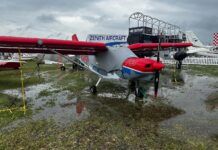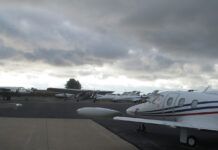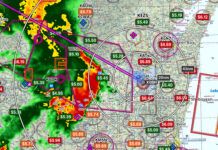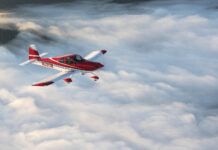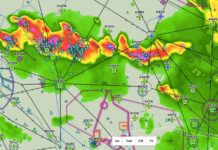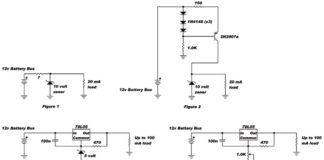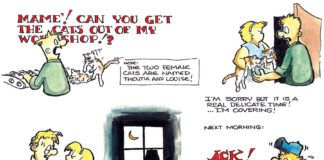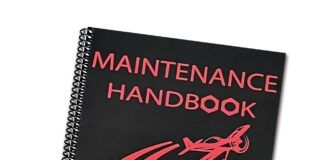I know last month I said I would write a series on maintenance, but a trip this week to Central Florida to perform some maintenance on an RV-10 reminded me of a not-so-fun trip to Florida many years ago. On the trip this time I saw firsthand how all of the technology in the cockpit enabled a much safer and less stressful flight, albeit not the kind I care to do very often, if at all.
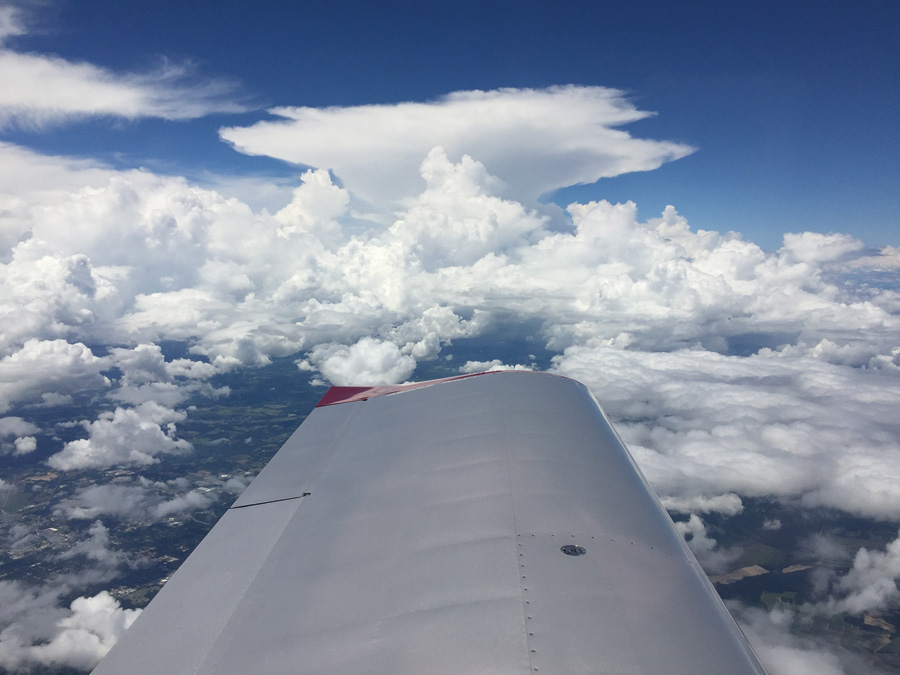
Here I’m at 14,500 feet, on my way to 16,500 feet, while giving the anvil head a very wide berth. I was perpendicular to it at this time, so the view is not as distinct as earlier. However, I had no intention of going back to get a better picture.
Flying in a light plane in Florida during the summertime, especially in the middle of the day, can be challenging and uncomfortable. It is usually hot and bumpy, and you can count on the daily afternoon thunderstorms. Throw in some fast-moving fronts, and the weather can get downright wicked, sometimes in a hurry. Having lived in the Southeast now for over 25 years, I understand this. Back in 1980 as a fledgling, part-time flight instructor near Cleveland, Ohio, my level of experience, understanding of weather, and light plane limitations were on a whole different level. On top of that, and I had just spent the last 1 years achieving all of my ratings in Tuscon, Arizona, where 50 miles visibility was a bad day (yes, they gave the actual visibility back then, and most every day it was 75-100 miles). Thunderstorms were mainly isolated, and you could see them from a great distance. Actually, we really didn’t discuss much weather avoidance during my time there. The only thing that stuck in my mind was a sign over one of the hangars that read, “There is no need to fly through a thunderstorm in peacetime.”
Florida Bound
In the late ’70s and early ’80s, the general aviation market was certainly booming, as was the housing industry. Some of the more successful builders were buying airplanes and having their employees trained to fly them. I happened to be giving flight instruction to a really nice gentleman who was an architect for a local builder who had purchased a brand new Cessna 182 with long-range fuel tanks. Besides having an airplane back then, the craze was to have a second home in Florida. What better way to get there than in your own airplane?

Having electronic ignition and oxygen, coupled with a nicely performing RV-10, allows for lots of options. I kept the fuel load light for the return trip to allow for quicker climbs if needed. At 16,500 feet, the electronic ignition was showing 38 degrees of advanced timing.
So, one Easter weekend the builder had already gone to Florida with a buddy and wanted the student and I to bring his son down for the weekend, leaving on Friday and returning Sunday. It was only a couple of days’ notice, and I spent a lot of time with flight service over the next few days, including being awake for most of the night prior to the trip getting updates every 4 hours. It seems there was a fast-moving front that was really wreaking havoc across the South. Only today do I understand how violent these springtime fronts can be in the Southeast. On the morning of the departure I was given an optimistic briefing by the FSS, and so we departed, using Macon, Georgia, as our first stop.
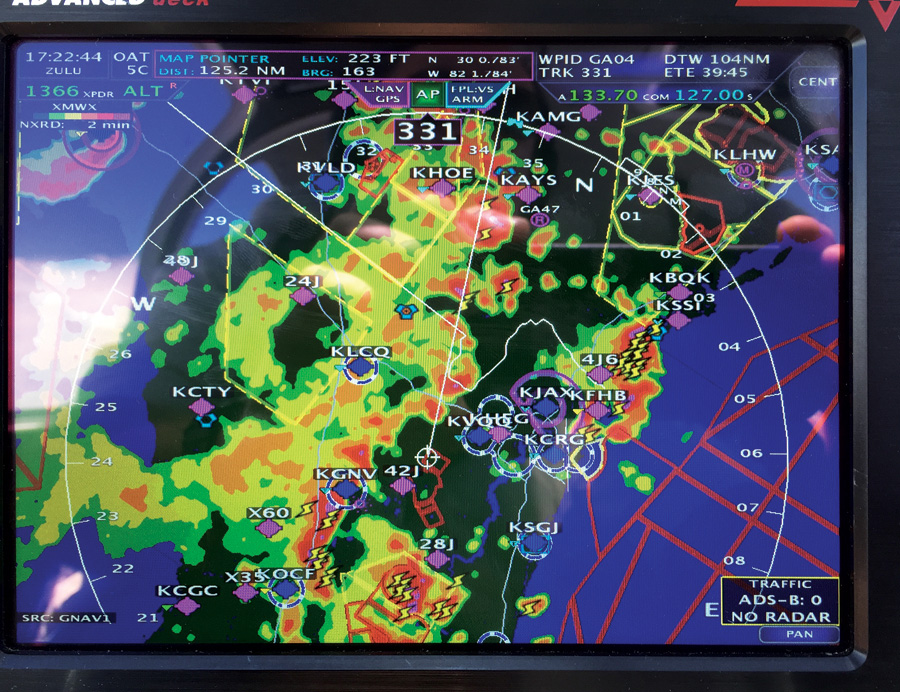
Here is the view presented by the XM weather. I couldn’t see a good way to penetrate it to get on the west side, so I carefully navigated northbound up the east side of the weather.
The new C-182 had all of the bells and whistles for the time, including DME, which of course provided our groundspeed. We were on an IFR flight plan at 11,000 feet, tracking the VOR airways, and riding in smooth air above a bunch of broken cumulus clouds. What was interesting to me is that the farther South we traveled, the groundspeed readout in the DME proceeded to decrease, until it finally stabilized at 75 knots. This was with a 142-knot true airspeed! We did finally make it to Macon and landed with a pretty blue sky and calm winds. I mentioned to the tower how beautiful it was (remember, coming from Cleveland, Ohio in April, any sunshine and blue sky is beautiful!) and the controller responded that it wasn’t that way earlier. Obviously, the front had gone through.
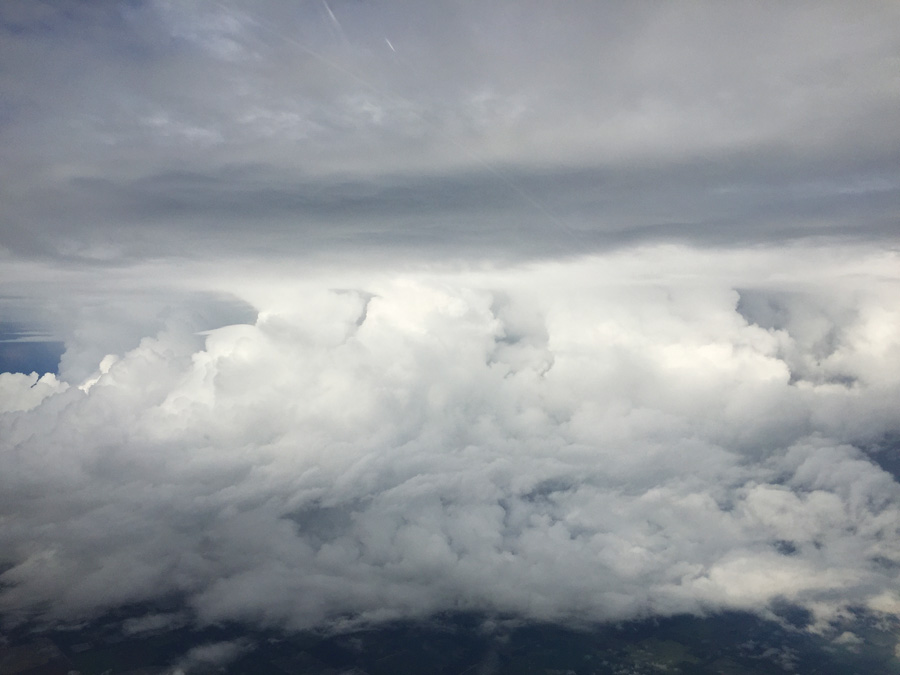
This was the view toward the west as I was northbound. As you can see, I had good ground contact and cloud clearance, along with a very smooth ride.
After refueling and a quick bite to eat, I again got a briefing from FSS, and we were on our way. The briefer had assured me that the front had passed and we could continue, but might need some deviations due to some straggling storms. So, I developed a plan in my mind to deviate farther to the southwest if needed, just to be sure and get behind the front. Soon after takeoff, I heard way too many other pilots asking for deviations, along with a warning from ATC regarding severe weather. I immediately asked for radar vectors to Tallahassee and then radar vectors to Sarasota, which we were given. For the next hour or so we had a nice smooth ride cruising in IMC at 11,000 feet. About 20-30 minutes after having made the turn at Tallahassee to head out over the Gulf, still in IMC, I heard the controller say, “Cessna 86J, start an immediate left turn.” Without asking any questions I started the left turn, and it was like someone turned the lights out, completely. It went from cloud white to midnight black immediately. By the way, it was 3:05 on Good Friday afternoon. The controller followed up by saying a pop-up storm had just shown up on his scope, and he had missed it with regards to us. Yikes. Then the rain and hail started, with the rain so hard that the engine quit multiple times from water ingestion. I could hardly hear anything on the radio with the volume up to the maximum.
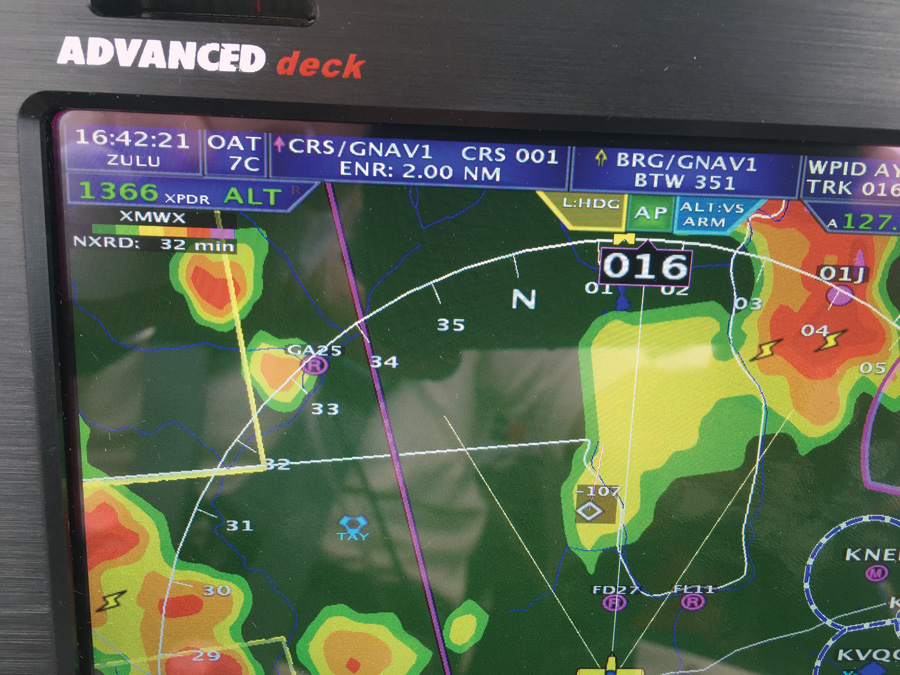
With the screen zoomed in, you can see how easy it was to deviate around the individual cells while never really getting that far off course (magenta line on left side of center).
I asked for a 2000-foot block altitude, as all I could do was really fly attitude and attempt to hold a heading. For the next 45 minutes we were tossed around in turbulence that I had never imagined was possible, with constant engine stops and surges, and a lightning display that rivaled any fireworks show I had ever seen. We were up and down 2000 feet in altitude, with me just trying to hold a wings-level attitude and not overstress the aircraft. I was certain the wings were going to come off at any minute. And here’s the funny part, if you want to call it that—I kept thinking about the sharks in the water beneath us! Jaws had left an indelible impression upon many of us during that era.
Clearly, the gods smiled on us that day. At 4 o’clock we were spit out into a beautiful blue sky and smooth air. A glance backwards showed the most ugly, dark thunderstorm cloud and anvil head I had ever seen in my life. I still don’t know how we survived, although I did hear later that C-182s were actually used for thunderstorm penetration and research at one time. During our time in the storm, I caught the student praying (couldn’t blame him), and the builder’s son was glued to the window in the back seat. As soon as we were tossed out, I turned around to apologize and couldn’t believe his response—”That was cool!” I left it at that, re-established contact with ATC, and continued on our way. After that trip I never flew on Good Friday for almost 20 years, and never cared to fly when any thunderstorms were forecasted along my route of flight.
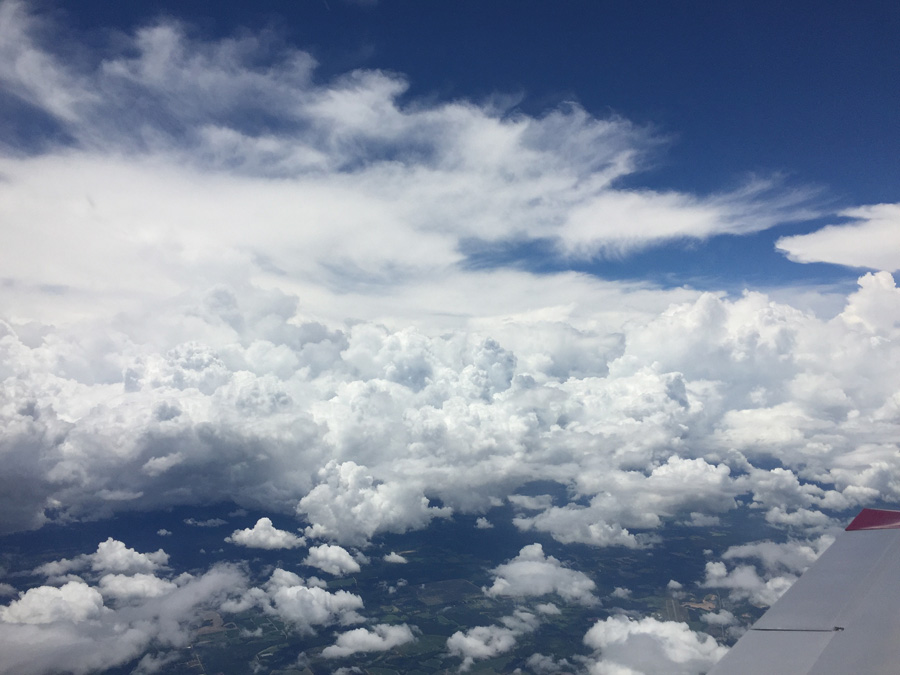
The view at 16,500 feet was excellent, allowing for fewer deviations and a much clearer view of the bigger picture. Most of the individual cells topped out at 15,000-18,000 feet and were much easier to deviate around as I could see them much farther ahead.
Florida Bound Again
On the most recent trip to Florida, I realized it was a flight I never would have attempted just a few short years ago. I left Atlanta early in the morning, intending to get the customer’s RV-10 fixed and being airborne for the return flight by noon. The trip down was uneventful, with just a few deviations around buildups, although I could see quite a mess over the Gulf that was clearly moving east. Flying IFR at 11,000 feet, right down the center of Florida, provided a very nice view of both coasts. I would have a very different view on the way home a few short hours later.
As luck would have it, I did finish by noon and was quickly on my way back. As I thought, the mess over the Gulf had moved inland, but between the view out the window and the picture on the weather screen, the route looked doable. A little nagging voice reminded me that here I was again, in Florida, in the afternoon, in the summertime, with thunderstorms. I promised my wife I would be careful and launched.
I always use Flight Following, even when VFR, but I won’t file IFR when there are thunderstorms, as I want some flexibility in maneuvering if needed. Florida airspace is crowded enough without the weather constricting everyone. I also make certain I always have ground contact or I will turn around. In this case, for the next 1 hours, I was up and down between 12,000 and 16,000 feet by choice, on oxygen and autopilot, had a very smooth ride, and never even got wet! I won’t say it was enjoyable, as any time thunderstorms are in the same state as I am when flying, I get uncomfortable. ATC was super about allowing any deviations I needed, which were constant. But I always had ground contact and excellent visibility, and I never went between any two columns unless I saw blue sky on the other side. I did deviate a little farther to the east than planned, as the storms were moving at about 45 knots perpendicular to my path. You can see the view on the screen in the picture, as well as some of the views out of the window. In their own way the clouds were very majestic, but not a force to be reckoned with. I learned that lesson a long time ago.
I saw at least three anvil heads on this trip, and I gave them a very wide berth of 20 miles or so, all the while smiling and saying, “I see you, Mr. Anvil Head, and we are not going to be friends today!”
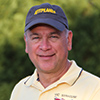
![]()
Vic Syracuse is a Commercial Pilot and CFII with ASMEL/ASES ratings, an A&P, DAR, and EAA Technical Advisor and Flight Counselor. Passionately involved in aviation for over 39 years, he has built 10 award-winning aircraft and has logged over 8000 hours in 70 different kinds of aircraft. Vic had a career in technology as a senior-level executive and volunteers as a Young Eagle pilot and Angel Flight pilot. He also has his own sport aviation business called Base Leg Aviation.

